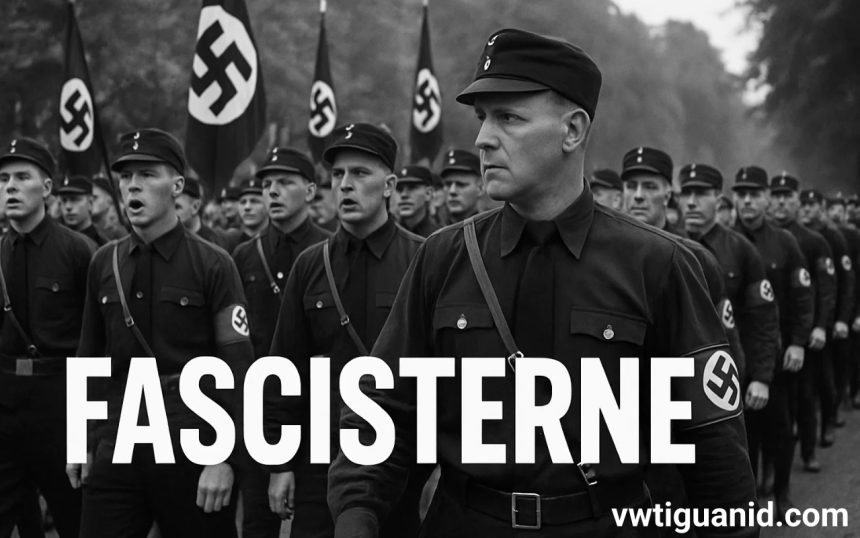Introduction
What comes to your mind when you hear the word “fascisterne”? For many, it’s a dark, politically charged term that echoes through the corridors of 20th-century European history. But fascisterne isn’t just another word from a history book — it’s a symbol, a warning, and a powerful lesson etched into the soul of Denmark’s past and echoed in the present.
The term refers specifically to the Danish fascists, primarily those who aligned with or supported the ideologies of European fascist movements during the early to mid-20th century. These groups, though smaller than their German or Italian counterparts, played a complex role in Denmark’s political and social landscape, especially during the years of World War II.
In this comprehensive guide, we peel back the layers to explore the origins, ideologies, key figures, impact, and modern relevance of fascisterne. This is not just a dive into historical facts but a critical exploration of how such ideologies take root and persist, even in democratic societies.
Origins of the Term “Fascisterne”
The word “fascisterne” is the definite plural form of “fascist” in Danish, directly translating to “the fascists.” Linguistically, the term originates from the Italian word “fascio,” meaning a bundle or group, symbolizing strength through unity. The term gained political significance in the early 20th century with Benito Mussolini’s formation of the Italian Fascist Party.
As Mussolini’s ideology spread across Europe, it found sympathizers in various countries, including Denmark. The Danish adaptation of the term came to be associated with local supporters of fascism, particularly those involved with the Danmarks Nationalsocialistiske Arbejderparti (DNSAP), Denmark’s National Socialist Workers’ Party. The term “fascisterne” was not merely a label but carried ideological weight, reflecting a desire.
for authoritarian leadership, national purity, and a rejection of democratic pluralism. It was both a self-identification by some and a pejorative used by opponents.
Historical Context: Fascism in Denmark and Beyond
To truly understand fascisterne in Denmark, we must first contextualize the broader European rise of fascism. The early 20th century was a time of significant upheaval. The aftermath of World War I left many European nations economically and psychologically devastated. The Treaty of Versailles, hyperinflation, and widespread unemployment created fertile ground for radical ideologies to take hold. Fascism, with its promises of national rejuvenation, economic revival, and social unity, presented an appealing alternative to liberal democracy and communism.
In Germany, this manifested as Nazism under Adolf Hitler, while in Italy, Mussolini’s fascist regime took firm control. Denmark, though relatively stable, was not immune to these ideological currents. The global economic depression of the 1930s hit Denmark hard, leading to political polarization.
Amidst this climate, the DNSAP emerged, drawing inspiration from Hitler and Mussolini. Though it never gained mass support, its presence marked a significant ideological shift and gave rise to the group broadly referred to as fascisterne.
The Danish DNSAP: A Local Brand of Fascism
The Danmarks Nationalsocialistiske Arbejderparti (DNSAP), founded in 1930 and led by Fritz Clausen, was Denmark’s principal fascist organization. Modeled closely on the German Nazi Party, the DNSAP adopted much of its iconography, including the swastika, and espoused a platform of aggressive nationalism, anti-Semitism, and authoritarian governance.
Clausen, a former physician, positioned himself as Denmark’s answer to Hitler, though he lacked the charisma and mass appeal of his German counterpart. The DNSAP’s ideology focused on the creation of a “pure” Danish race, vehement opposition to communism, and the establishment of a corporatist state. Though the party never garnered more than 2% of the vote in national elections, it maintained a vocal and visible presence through rallies, propaganda, and paramilitary groups like Landstormen.
These followers, known collectively as fascisterne, represented a small but fervent faction within Danish politics. Their activities became more pronounced during the German occupation of Denmark in World War II, when they saw an opportunity to gain influence and possibly reshape the nation according to their ideals.
Core Ideologies of Fascisterne
At the heart of fascisterne’s belief system were a few key ideological pillars, each rooted in a broader European fascist tradition. First and foremost was hypernationalism — the idea that the nation, often defined in ethnic or racial terms, should be the highest political value. Fascisterne believed that Denmark should be a homogeneous society, free from “foreign” influences, which included Jews, communists, and other minority groups.
This nationalism was often couched in historical romanticism, invoking Denmark’s Viking past and cultural heritage as justification for exclusionary policies. Secondly, fascisterne rejected democracy and embraced authoritarian leadership. They viewed parliamentary politics as weak and divisive, preferring a centralized state led by a strong, unchallenged leader.
This belief in autocracy was coupled with militarism; fascisterne glorified violence, discipline, and the armed forces as instruments of national revival. Lastly, their staunch anti-communism served both ideological and strategic purposes, positioning them as defenders of tradition against the perceived chaos of socialism and Bolshevism.
These core beliefs were disseminated through speeches, publications, and demonstrations, aiming to sway public opinion and recruit like-minded followers.
Key Figures and Influencers
Among the most notable individuals associated with fascisterne was Fritz Clausen, the leader of the DNSAP. Clausen envisioned himself as Denmark’s Hitler, although his actual influence was far more limited. He led the party from 1933 until its dissolution in 1945, advocating for close cooperation with Nazi Germany. Under his leadership, the party organized public events, published propaganda newspapers, and attempted to insert itself into Danish political discourse.
Another key element of fascisterne was Landstormen, the DNSAP’s paramilitary wing. Modeled after the German SA, Landstormen members often wore uniforms, participated in drills, and engaged in public intimidation of political opponents. Their presence added a physical dimension to the DNSAP’s ideological campaign. Additionally, there was the Frikorps Danmark, a unit of Danish volunteers who fought on the Eastern Front under German command.
Though not all its members were formal DNSAP affiliates, their participation was often seen as an extension of fascist sympathies. Collectively, these figures and groups embodied the fascisterne movement, representing both its aspirations and its limits.
Fascisterne During World War II
The German occupation of Denmark in April 1940 marked a pivotal moment for fascisterne. Initially, Denmark retained a degree of autonomy under the policy of cooperation with the Nazis, but fascisterne saw this as an opportunity to push their agenda. Clausen and the DNSAP hoped that the occupation would catapult them into power, allowing them to reshape Danish society along fascist lines.
However, their ambitions were met with widespread public resistance. Despite German support, the DNSAP failed to gain significant political ground. Danish society, deeply rooted in democratic traditions, largely rejected the fascisterne, viewing them as traitors and collaborators. As the war progressed and the brutal realities of the Nazi regime became apparent, public sentiment turned even more decisively against them.
The Danish Resistance Movement gained strength, and acts of sabotage and civil disobedience became more common. Fascisterne, once a noisy minority, found themselves increasingly isolated. Their collaboration with the occupiers sealed their fate, branding them as enemies of the nation in the eyes of the Danish people.
Post-War Fallout and Societal Rejection
With the liberation of Denmark in May 1945, the full extent of fascisterne’s collaboration with the Nazis came to light. The Danish government, reestablished after the occupation, initiated legal proceedings against known collaborators. Fritz Clausen was arrested and died under mysterious circumstances in custody. Other members of the DNSAP and affiliated groups were prosecuted, imprisoned, or faced public ostracism.
The party itself was banned, and its symbols outlawed. More importantly, Danish society collectively turned its back on fascism. The post-war years saw a concerted effort to distance the nation from the shame of collaboration. Educational curricula were revised to include honest accounts of the occupation and the dangers of authoritarianism. Museums and memorials were established to honor the resistance and commemorate the victims of fascist policies.
This societal reckoning ensured that fascisterne would not easily find fertile ground again in Denmark. The term itself became a historical marker, a reminder of a period when democracy teetered on the edge.
Modern Echoes and Continuing Relevance
Though the fascisterne of the 20th century are long gone, their ideological descendants still lurk in modern political movements. In recent years, Europe has witnessed a resurgence of right-wing populism, often couched in nationalist and anti-immigrant rhetoric. In Denmark, parties and individuals espousing these views may not identify as fascisterne, but they often draw from similar playbooks:
Emphasizing cultural purity, national identity, and the need for strong leadership. The internet has further complicated the landscape, providing platforms for radicalization and the spread of extremist ideologies. Social media algorithms amplify outrage and division, creating echo chambers where fascist ideas can gain traction under the guise of patriotism or free speech.
While the labels have changed, the core messages remain disturbingly familiar. Recognizing these patterns is crucial. Understanding the history of fascisterne provides a vital lens through which to view contemporary threats to democracy. It reminds us that authoritarianism often begins with small, seemingly reasonable steps before spiraling into oppression.
Read More: Cedarsoftware.co.uk
Conclusion: The Enduring Lessons of Fascisterne
The story of fascisterne in Denmark is more than a historical footnote; it is a cautionary tale with enduring relevance. It shows how economic hardship, social unrest, and political polarization can open the door to extremist ideologies. It highlights the importance of vigilance, education, and civic engagement in safeguarding democratic values.
While Denmark successfully resisted the full embrace of fascism, the presence of fascisterne during one of history’s darkest chapters serves as a reminder that no society is immune. By studying their rise and fall, we equip ourselves with the tools to recognize and resist similar threats today.
In an age of increasing political volatility, remembering the past is not just an academic exercise — it is a moral imperative.




